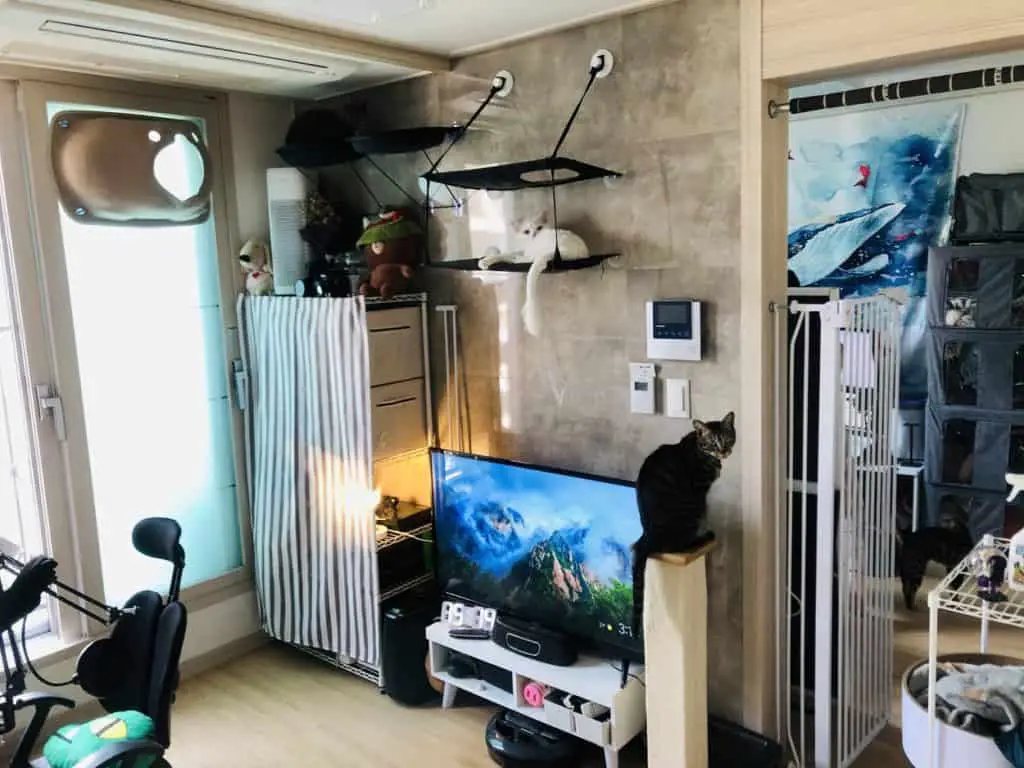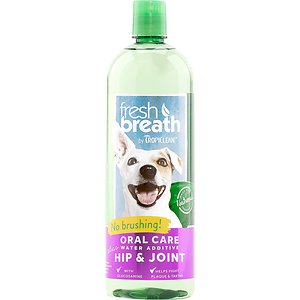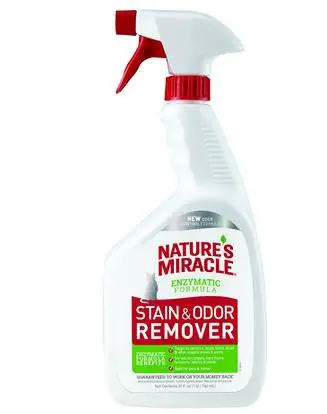Things change, where we live might change, and because of that how we live changes too. Our cats also follow the flow of life similarly and have to be flexible in their ever-changing environments and homes – even if it means moving from a larger house to a smaller apartment. However, there are always things we can do to help them adapt more quickly and get comfy in no time.
Although the apartments are typically smaller than houses, it doesn’t have to be a negative thing. There are a lot of things that apartments can provide for our cats that a normal home cannot.

So what are the things to know when moving from a house to an apartment? First, know that there will be some compromise between cat spaces and human spaces. Second, having a cat in an apartment means that you’re going to have more exposure to your cat throughout the day and vice versa. Third, because furniture, objects, and items around the home are going to be closer together for cats – it’s going to take some cat-proofing to protect your cats and your valuables around the home.
For a complete in-depth guide on apartment living with cats, read my article here: Wonderful Beginner’s Guide to Having Cats in An Apartment!
House VS Apartment: Living With Cats
Going from house living to apartment living with cats isn’t that big of a change unless your cat is used to some outdoor time, in which case there are things we can do to help them adjust a little bit better.
House or apartment? Which one is better for our cats. I answer that question with a study about one of the most overlooked things when cat owners are trying to improve their cat’s wellbeing indoors whether in a house or apartment. Click here to read the article!

Here are some of the big differences that going from house to apartment that you might discover:
- Less floor space – apartments typically have less horizontal space but what they lack in flooring space they have a lot of potential in creating elevated, catified areas that our cats can play, perch and navigate. Don’t be scared off by catification, it’s a lot easier than it sounds – read the free guide: catification on a budget. Basically, keep the cats off of the ground as much as possible.
- More compact living space – It’s both a good and bad thing because your cats can get into trouble a bit more easily but it can also be a good thing because spaces can get grouped together to be used more efficiently. For example, using racks to contain cat supplies, cat furniture, and as a place for cats to play in.
- Less ventilation – the downside of smaller spaces is that smells can get concentrated. Other than obvious things like opening the windows – odor management in the apartment is important.
- Litter box placement – In a house, it’s easy to just stick the litter box anywhere but in an apartment, floor space is valuable so there should be some considerations on how many and where the optimal litter box placement will be. It might take some trial and error to find a spot where it’s easy to clean, have minimal tracking, and is an appealing spot for your cats to do their business.
- More exposure to your cats – in a smaller space you should expect to be around your cats more often. This is obviously expected but in a smaller apartment, you’re going to be hearing cats meows, rough-housing, basically, you’re going to know your cat’s every movement. Therefore, it’s good to have a tighter routine for your cats which will help them manage their energy better.
Also, having more frequent exposure allows you as a cat owner to be more aware of your cat’s feelings and health. You’re able to notice when your cat is feeling stressed, ill, or doing something that it shouldn’t. It’s much easier to correct unwanted behaviors in cats.
How Large Should The Apartment Be?
Cats are more flexible than you think about their living arrangements. A single cat is able to live in an apartment as small as 15 square meters. If you have more cats, see below for some recommendations and notes.
| Maximum # of Cats | Minimum Recommended Apartment Size | Comments and Notes |
| 1 | Approximately 15 square meters | One cat generally won’t be too fussed about the size nor will they care much about elevated spaces because they’re the sole owner of the space. |
| 2-3 | Approximately 20 square meters | When there are multiple cats that live in a small space – we have to think about our one room as a room with many zones. To provide more zones is to provide more vertical places to get to. Remember, cats are territorial and if they have more territory (it doesn’t matter if it’s horizontal or vertical), the more confident they are. As a result, the higher chance for healthy relationships between cats and humans. |
| 4+ | Approximately 30+ square meters | 4 or more cats in a small space definitely need a lot more thought and creativity of how to use the amount of space that is available. Using racks and stacking cat furniture is recommended (see my article for tips and ideas about living with cats in a small space) More cats mean more time/routines required to keep them busy and stimulated throughout the day. Engaging and entertaining cats can be very easy and simple, read about it in my article here! |
How to Prepare an Apartment For Cats
Before continuing remember that all of this is covered more in-depth in my Complete Cat Apartment Guide. As an abridged version there are a few things that we should be preparing for our cats:
- Secure valuables, and other sensitive items that you don’t want the cats to mess around with. They can and they will get into stuff that you don’t want to. Especially your computer/office area.
- Food and snacks should be kept in a ziplock bag so that they can’t smell them and get to it. Cats are amazing foragers and they’re able to squeeze into cabinets and drawers quite easily to bring out the snacks.
- Keep the floor uncluttered. It helps prevent our cats from developing bad behavior habits (such as keeping their humans awake!). Having one or two cat toys out is fine but any more than that may become a hazard.
- Use safety locks to prevent cats from opening cabinets, doors, or drawers (yes they can get into there if they really want to).
- Pine litter is your friend. While sand litter might be okay for houses, in apartments, cats can spread the sand litter everywhere. Pine litter fixes this and is so much easier to clean up.
Apartment Essentials When Living With Cats
For the full curated list of supplies see:
Recommended Apartment Cat Supplies
Recommended Apartment Space-Saving Supplies
Odor Management Supplies
-
 Check Price!
Check Price!TropiClean Fresh Breath Water Additive + Plus Hip & Joint Dog & Cat Supplement is specifically designed to promote wellness for pets. Glucosamine is widely known for its active role in the repair and development of damaged or lost cartilage. Fresh Breath +Plus is uniquely designed to clean teeth, freshen breath for 12 hours, and promote complete pet wellness. Daily oral hygiene is essential to pet health. Without it, 70% of dogs and cats will start showing signs of periodontal disease by age three. When left untreated, oral disease can lead to serious health problems affecting the heart, lungs, kidney and other major organs. By simply adding Fresh Breath +Plus to your pet's water daily, you can help fight this vicious cycle.
We earn a commission if you click this link and make a purchase at no additional cost to you.
-
 Check Price!
Check Price!This air purifier is great for not only particles in the air but there is a carbon filter for smells and a UV light to help kill airborne germs and viruses. It also an antimicrobial agent that inhibits the growth of mold, mildew, and other odor-causing bacteria on the filter's surface.
We earn a commission if you click this link and make a purchase at no additional cost to you.
-
 Check Price (US) Check Price (CA)
Check Price (US) Check Price (CA)When you need that extra odor prevention, sprinkle a little into the sifting tray. Very useful when you need to get rid of odors quickly (like when guests come over).
We earn a commission if you click this link and make a purchase at no additional cost to you.
-
 Check Price (US) Check Price (CA)
Check Price (US) Check Price (CA)Nature's Miracle Just for Cats Stain and Odor Remover Spray is tough on cat urine, feces, vomit, drool, and other organic stains and odors. The bacteria-based formula produces enzymes to target spot stains and odors while freshening with a light citrus scent. When used as directed, it's safe to use on carpets, hard floors, furniture, fabrics, and more—because curious cats can get into just about anything. Plus, the ready-to-use spray bottle helps you get to work right away.
We earn a commission if you click this link and make a purchase at no additional cost to you.
